Between 1980 and 2000 was Queensland rugby’s golden era. We look back at our top 50
Queensland rugby is again basking in the glory of success after the Reds’ drought-breaking win over NSW at the weekend. But not long ago success was common. We look back at Reds rugby’s golden-era top 50 players, 1980-2000. Today, numbers 31-40.
Local sport
Don't miss out on the headlines from Local sport. Followed categories will be added to My News.
Queensland rugby is again basking in the glory of success after the Reds drought-breaking win over NSW last weekend. But not long ago success against the Blues was common.
In this five-part series starting today, we look back at Reds’ rugby’s golden era top 50 players, 1980-2000.
To be considered for the top 50, you must have played a majority of your career in the state or been born in Queensland.
It is why, for example, David Giffin, Pat Howard, Brendan Cannon, Brett Robinson (all ACT stars) and Geoff Shaw (NSW) missed out.
A host of elite players, including were also desperately unlucky, such was the wealth of talent in Queensland rugby in that 20 year era.
There was no room for class acts like Alan Dick, Greg Hassell, Shaun Hourigan, Nigel Holt, Mark Nightingale, Tom Barker and David Phillips, among many, many more.
It is a Melbourne Cup field of talent and today we present the No. 40-31 ranked players from our golden era.
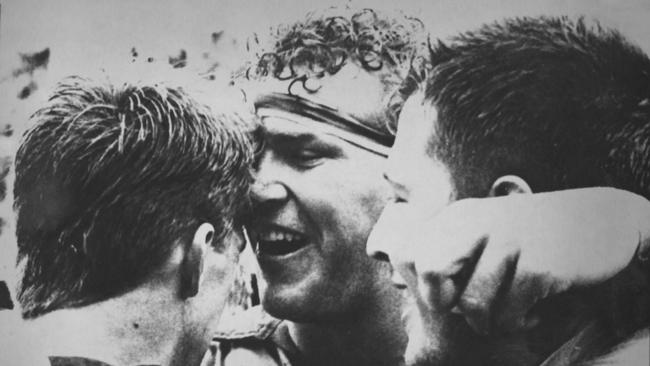
No. 31.
SAM SCOTT-YOUNG
Brave to the core, Scott-Young was a footballer everyone would love to have gone into battle with. While not small, in the world of rugby backrowers he was somewhat on the small side. But my word he made up for any physical shortcomings through courage, an iron will, and more courage. A confident bloke with a bit of swagger, Scott-Young loved clashes with NSW because it gave him a chance to climb over the top of NSW rivals more fancied than him at the national selection. table. He also loved the Queensland jersey and Reds Queensland coach John Connolly, nor his teammates, would swap him for anyone. Scott-Young did play seven Tests, but was good enough to play more. One of his finest moment in an Australian jersey came in the third Test of 1990 when, selected at breakaway, he helped the Wallabies to a drought breaking victory in Wellington. Then, two years later, he was front and centre in helping Australia claim the 1992 Bledisloe Cup Series. If this author was to name a person he wanted to play rugby for his life, then Scott-Young would be the selection.
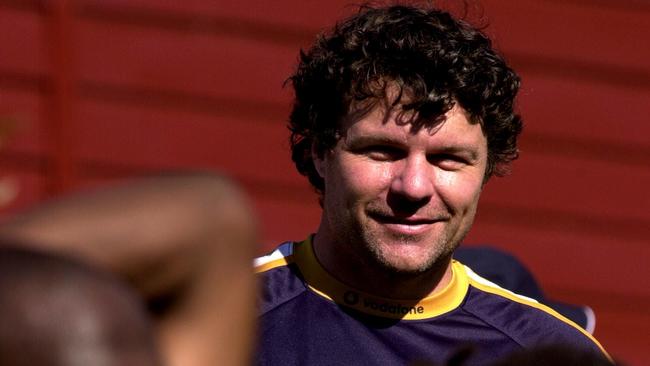
No. 32.
CAMERON LILLICRAP
Lillicrap was a multi-talented prop whose career was curtailed only by injury – not by the opposition. He was a wonderful scrummager and mauler, both in heavy combat and sweeping around a line-out for University and Queensland, and when the NSW front row came knocking at his door, he was ready for them. One-on-one he was the best in the business of his era His treasured first Test cap came alongside fellow Queenslanders Mark McBain and Andy McIntyre in 1985, and his last of seven caps during the 1991 World Cup. Fortunately for Queensland, upon his retirement, he became the squad’s physio, but he was also a coach and mentor to old and new players alike. A wonderful Queensland player.

No. 33
CHRIS HANDY
A larger than life character who has almost done as much for promoting rugby off the field as he did for the code when he is playing it. A magnificent physical specimen to play prop, Handy put his head down and his backside in the air and helped plough Queensland into a whole new era from the mid-1970s onwards. A survivor from the days when Queensland touring teams were billeted when they played matches in New Zealand, Handy was in the Queensland team which swung Queensland’s fortunes around against the NSW Blues in 1976. That thumping 42-4 win at Ballymore – when the crowd chanted “We want 50, we want 50’’ – sent Queensland storming toward the Reds’ golden era from 1980 to 2000. Handy was to the forefront of another milestone victory, this time for Australia in 1979 when the Wallabies beat the All Blacks 12-6. Once retired, the Brothers’ great’s passion for rugby never waived and a whole new generation of followers knew him only as television commentator who spoke of the code in a way that Banjo Paterson delivered his poetry – with conviction. He was also a man of the people, a wonderful publican and an extraordinary drinker of pots. Handy, a St Joseph’s Gregory Terrace Old Boy, is very much a Queensland rugby treasure.
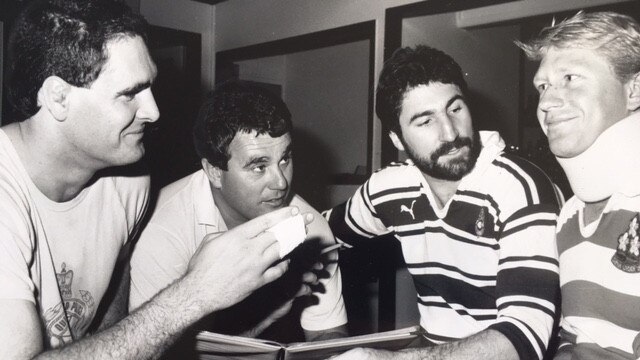
No. 34
PETER GRIGG
The Brothers rugby legend was an amazing success story whose rise from a Far North Queensland schoolboy into the bosom of the Queensland and Australian teams is nothing short of inspirational. Grigg was obviously a fine athlete, powerfully built and fast. But his attitude, coupled with his ability, is what got him to the top. The sight of Grigg going as straight as a dire up the sideline is etched in the memory of the Brothers’ faithful and Queensland supporters. Grigg was a member of the Queensland team which remarkably beat the All Blacks in 1980, and this performance was a springboard into his Test debut against New Zealand just weeks later. Grigg scored two tries in the Wallabies’ 26-10 win. He was a regular in the Australian side until his retirement in 1987 after playing in five of Australia’s six World Cup matches. He was also a member of Brothers’ 1987 premiership side which upset Souths.
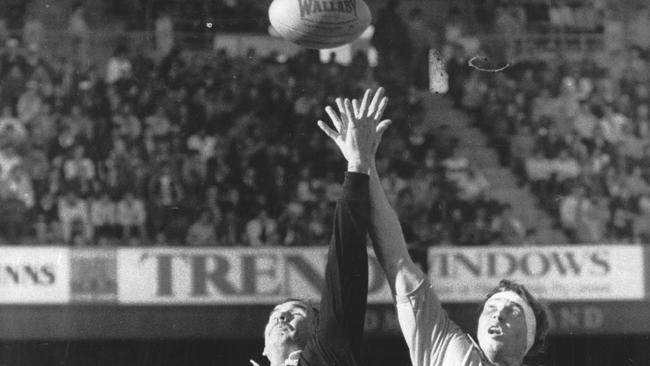
No. 35
DAVID HILLHOUSE
Hillhouse was a remarkable tight forward talent with an extraordinary leap and wonderful hands. His presence at No. 36, and not in the top 20, is only because most of his deeds for Queensland came in the 1970s. A Churchie old boy, Hillhouse was tall but no skylab, yet he was able to match it, and beat, the tallest of foe in lineouts, such was his spring-heeled ability. He was also a hooker’s dream with fantastic hands used to retrieve lineout ball, but away from the set piece Hillhouse was a robust and mobile forward for the GPS club, Queensland and Australia. Hector Hillhouse, who is very much one of Queensland’s greats, was also to the forefront of Queensland’s rugby revival from 1976 into the 1980s.
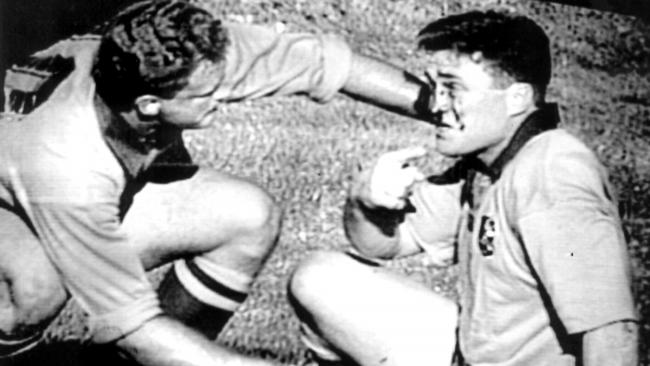
No. 36
PAUL CAROZZA
The diminutive Carozza was a crowd favourite of Ballymore fans. A winger who hailed from the Brisbane State High School system, Carozza’s legs would work like pistons as he reached top speed down the sideline. He was a tremendous finisher who would pin his ears back and head for the corner post like it was the finishing line in an Olympic Games 100m dash. But he also had a great work ethic off the ball, earning the respect of his teammates for his courageous defence and precision positional play which cut down the chances of opponents gaining advantages from tactical kicking. He also had the joy of helping Queensland beat Auckland (basically the All Blacks) and was a member of the Australian side which famously captured the Bledisloe Cup from New Zealand in 1992. Followers of the code will forever have a warm place in their hearts for Carozza.
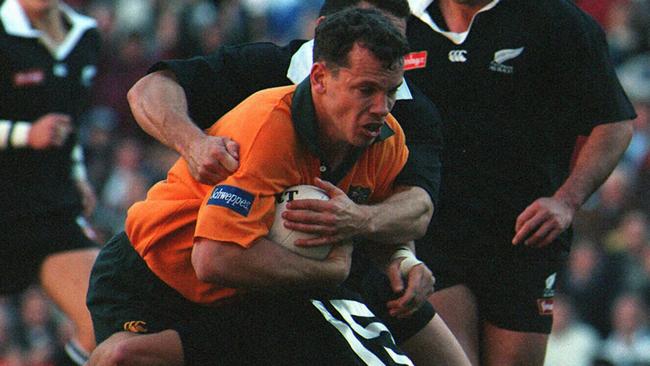
No. 37
DAMIEN SMITH
The long striding Smith was a fantastic player for Queensland who saved his best when playing against the best – David Campese. It would not be an interstate clash 1990s’ style without the sight of Smith – his eyes as wide as saucers and steam coming from his ears – storming toward arch rival Campese. Smith had three aims on interstate match night – run over the top of Campese, help Queensland win, and then run over the top of Campese again. A big man for a winger, Smith was somewhat of a smiling assassin. Before the match he would have the widest smile in the world, but whiteline fever would overcome him once he past the dressing room doors. He also had the distinction of scoring two of the greatest individual tries by a Wallaby – one from a garryowen in the 1995 World Cup, and another against the All Blacks when he powered past half a dozen tacklers in a bulldozing run to the tryline in Sydney. Unfortunately both are lost a little in history because they came in losing Tests. For all of his competitive nature, Smith also had a sense of humour. In 1995, after the Wallabies had lost to the All Blacks, Smith emerged from the dressing room to grab some fresh air on the field. With a broken nose, ice strapped to his shoulder and also around his thigh, Smith smiled at a supporter and said – “I’ve been Lomued’’ in reference to his afternoon opposing giant New Zealand wing great Jonah Lomu who had trampled him.
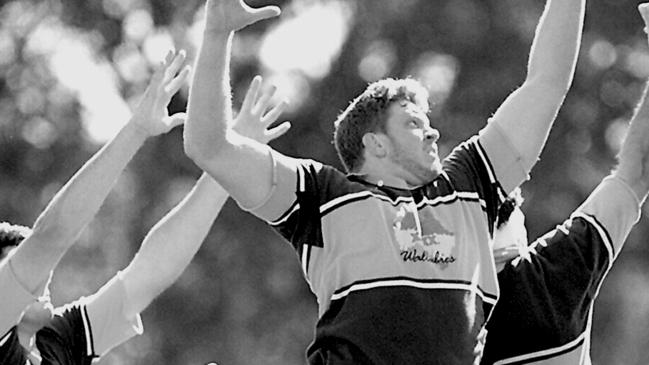
No. 38
GARRICK MORGAN
Morgan was a powerhouse lock with all the skills in the world. Indeed he would have played many more matches for Queensland and Australia had he not switched to rugby league in the mid-1990s. Morgan’s career was split into two – first as John Eales second rower partner following the retirement of Rod McCall in the early 1990s – and then again from 1996 onwards after his return to rugby from league. Arguably his finest season came in 1993 when he was named International Player of the Year by the prestigious French rugby magazine, Midi Olympique. Morgan was a fantastic performer for the Reds either side of his league stint. He was as tough as teak with a yearning for powerful driving defence, while also being a damaging ballrunner. Morgan would have been a winner in any era.
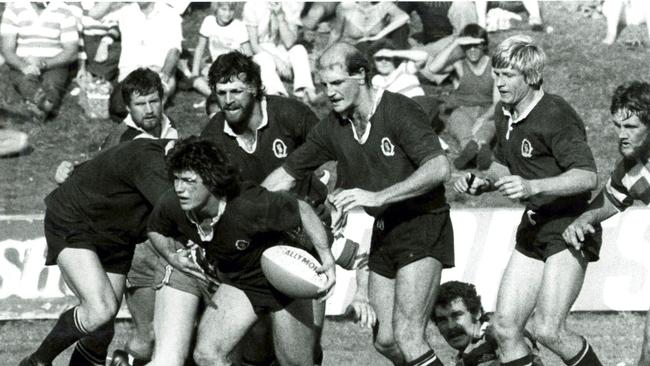
No. 39
PETER McLEAN
Mclean is a wonderful Queensland rugby old boy who holds a special a special place in history for the role he played in helping the maroons out of the rugby wilderness in the mid-1970s and into the glory years of 1980 and beyond. A second row partner of David Hillhouse, the grafting Mclean was the perfect foil to Hillhouse. Across five years McLean played 16 Tests, the last of which was alongside another boom Queensland tight forward, Duncan Hall. McLean is part of the extraordinary McLean family who have been institutions around the sport since the 1920s. His cousins are Wallabies Jeff and Paul.
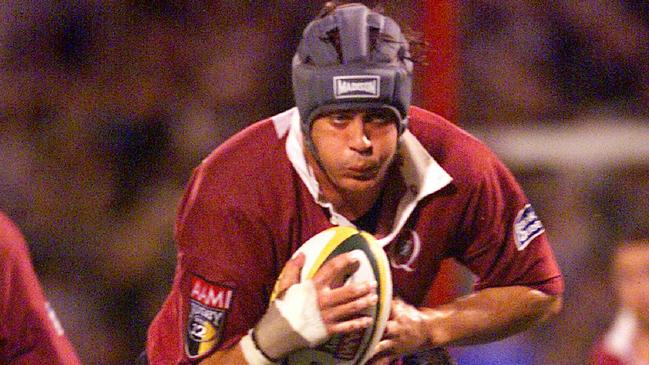
No. 40
NATHAN SHARPE
Sharpe’s ranking at No. 40 comes only because his best work as a player came post-2000 – and much of it with the Western Force. From The Southport School via University, Sharpe was a Mr Natural who learned his craft in Queensland sitting behind the great John Eales and the towering Garrick Morgan. A veteran of 116 Tests, Sharpe made his debut for Queensland in 1998 and was an automatic choice to replace Eales once Eales retired from international rugby. By 2004 Sharpe was the Australian captain and, appropriately, in his final season in 2012 he was awarded The John Eales Medal.
